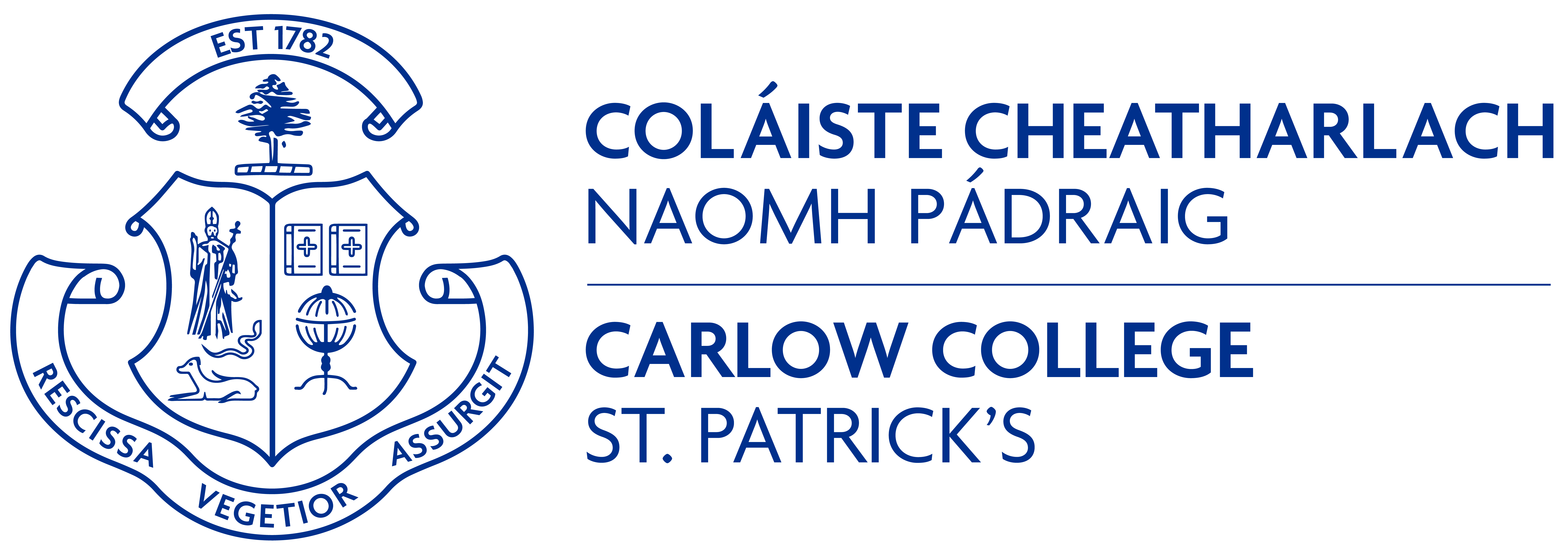Founded in 1782, Carlow College, St. Patrick’s is the second oldest third level institution in Ireland. Since its first admissions in 1793 with 37 young men, the College has expanded considerably in student numbers, academic provision and civil engagement.
Bunaithe sa bhliain 1782, is é Coláiste Cheatharlach, Naomh Pádraig an dara coláiste tríú leibhéal is sine in Éirinn. Ó na céad micléinn, 37 fir óga, gur glacadh leo sa bhliain 1793, tá méadú mór tagtha ar líon uimhreacha na mac léinn, ar sholáthar acadúil agus ar rannpháirtíocht shibhialta an Choláiste.
From Foundation to Present Day
When the College was built in the 1780s, the intention was to provide education to young Catholic men. However, the French Revolution closed the continent to Catholic seminarians, therefore clerical education was added to its remit. On 1st October 1793, the first of 37 students that year commenced at Carlow College. The College offered a broad Humanities’ curriculum, the classics, Latin and Greek, Philosophy and Theology were taught from the first day. Later, additional subjects such as French, English language and literature, rhetoric, history, geography, political economy, accounts, law, mathematics and natural philosophy were added. There were also options to study music, dancing and drawing. Throughout the nineteenth and twentieth centuries the College continued to be a prominent provider of third-level education in the south-east of Ireland. Since the 1990s the College has reverted to its original remit and is entirely a lay college welcoming women and men through the CAO.
Today, with close to 600 students from all over Ireland enrolled at the College, Carlow College strives to make education in the liberal arts and social studies accessible to students from a diverse range of backgrounds.
Ó Bhunú go dtí Inniu
Nuair a tógadh an Coláiste sna 1780-óidí, an cuspóir a bhí ann ná oideachas a chur ar fáil d’fhir óga Caitliceacha. Faraoir, dhún Réabhlóid na Fraince ilchríoch na hEorpa d’ábhair shagairt Éireannacha i dtaobh freastal ar choláistí cléireacha, agus mar sin, cuireadh oideachas cléireachais le sainchúram Choláiste Cheatharlach.
Ar an gcéad lá de Dheireadh Fómhair, 1793, thosaigh 37 mac léinn ag freastal ar an gColáiste. Chuir an Coláiste curaclam leathan daonnachtaí ar fáil, agus múineadh léann clasaiceach, Laidin agus Gréigis, Fealsúnacht agus Diagacht ón gcéad lá. Níos déanaí, cuireadh ábhair bhreise leo, ar nós Fraincis, Béarla -litríocht agus teanga, reitric, stair, tíreolaíocht, eacnamaíocht pholaitiúil, cuntasaíocht, dlí, matamaitic agus fealsúnacht nádúrtha. Bhí rogha ann staidéar a dhéanamh ar cheol, damhsa agus línaíocht freisin. Le linn an 19ú agus an 20ú haois, lean an Coláiste mar sholáthraí iomráiteach oideachais tríú-leibhéal in oirdheisceart na hÉireann. Ó na 1990-óidí, tá an Coláiste tar éis filleadh ar a shainchúram bunaidh, agus is coláiste tuata é a chuireann fáilte roimh gach duine, mná agus fir, tríd an CAO.
Inniu, le beagnach 600 mac léinn ag teacht ó cheann ceann na hÉireann, déanann Coláiste Cheatharlach iarracht oideachas sna saordhána agus eolaíochtaí sóisialta a thabhairt do mhic léinn ó chúlraí éagsúla.
Timeline

